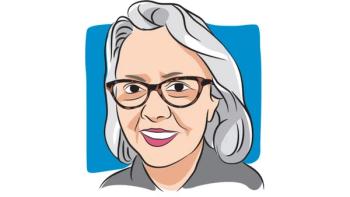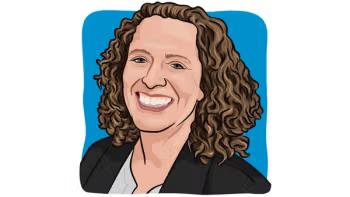
Frequency, Wait Times Result in 'Scanxiety' For Many With Lung Cancer
"Scanxiety" is common in people with cancer, but is particularly prevalent in those with lung cancer, according to a recent survey.
While living with cancer can induce an increased amount of anxiety in most individuals, those with lung cancer reported high amounts of “scanxiety” — a feeling that could last even years down the road, according to the Lung Cancer In America 2018 survey.
Scanxiety — the anxiety, fear and worry that is associated with scans, especially before the results are revealed – can occur most often in those with lung cancer because of the frequency and wait time of results.
“Scanxiety is something that we talk about a lot in the community, and for many people, it may not be a feeling that is going to last for a very long time, but we hear a lot of people expressing concern about their scans,” Sara Hayes, senior director of community development at Health Union and leads the LungCancer.net team, said in an interview with CURE.
While lung cancer is the second most common cancer for both men and women in the U.S., according to the American Cancer Society, grim prognoses and later-stage diagnoses lead to concerns from the start. For example, the survey found that 58 percent of patients with non-small cell lung cancer (NSCLC) were diagnosed at stage 3 or 4 disease.
On any given day, 86 percent of respondents reported having at least a little bit of anxiety. For those who reported feelings of scanxiety, three-quarters reported either "more" or "a lot more" anxiety around the time of scans than at other times.
“They are afraid treatment isn’t working anymore or that they’ll show that there has been progression,” Hayes said. “Even 10 years down the line when they have had clean scans, they’re still worrying that something might come back, or they’ll have a recurrence. So, after having a life-changing diagnosis, this can bring on new forms of anxiety.”
She also attributed this partially to the frequency of exams, given that three-quarters of respondents received scans every three to four months or more. Even worse, 57 percent of these individuals reported having to wait two or more days to get the results of their scans.
To address these concerns, three-quarters of patients reported to have utilized tactics and resources to help them cope with their scanxiety, which included prayer, keeping busy, talking with others, staying positive and taking medications.
Although not surprising to her, Hayes noted that responses of individuals staying positive might come as a surprise to some, but will ultimately show many that a sense of community can help.
“No matter how you feel, you know that there are others that feel the same way you do,” she added. “So, it really is all-encompassing for community members to know that there is someone else coping in (the lung cancer) community.”
In addition to scanxiety, many individuals also reported a need to balance multiple facets of living with lung cancer: Nine of 10 said they used medications to prevent or minimize side effects related to treatment; three in 10 have been diagnosed with another type of cancer and, in turn, deal with comorbidities such as COPD (36 percent) and hypertension (30 percent).
However, all of these factors support the fact that individuals can turn to lung cancer communities to assist with these feelings. “Knowing someone else has been in your shoes, and listening to their experience can be really helpful,” Hayes said.




